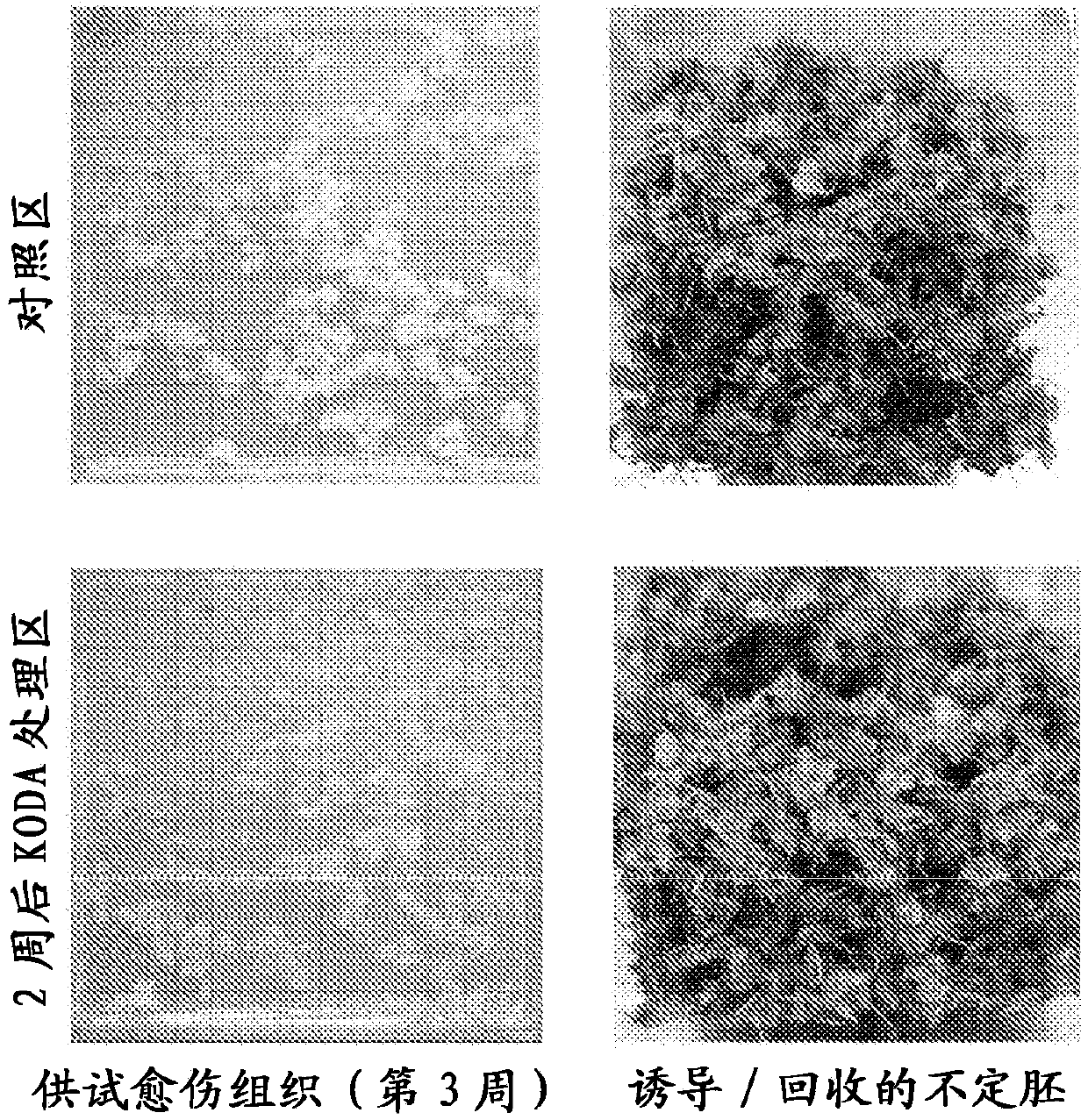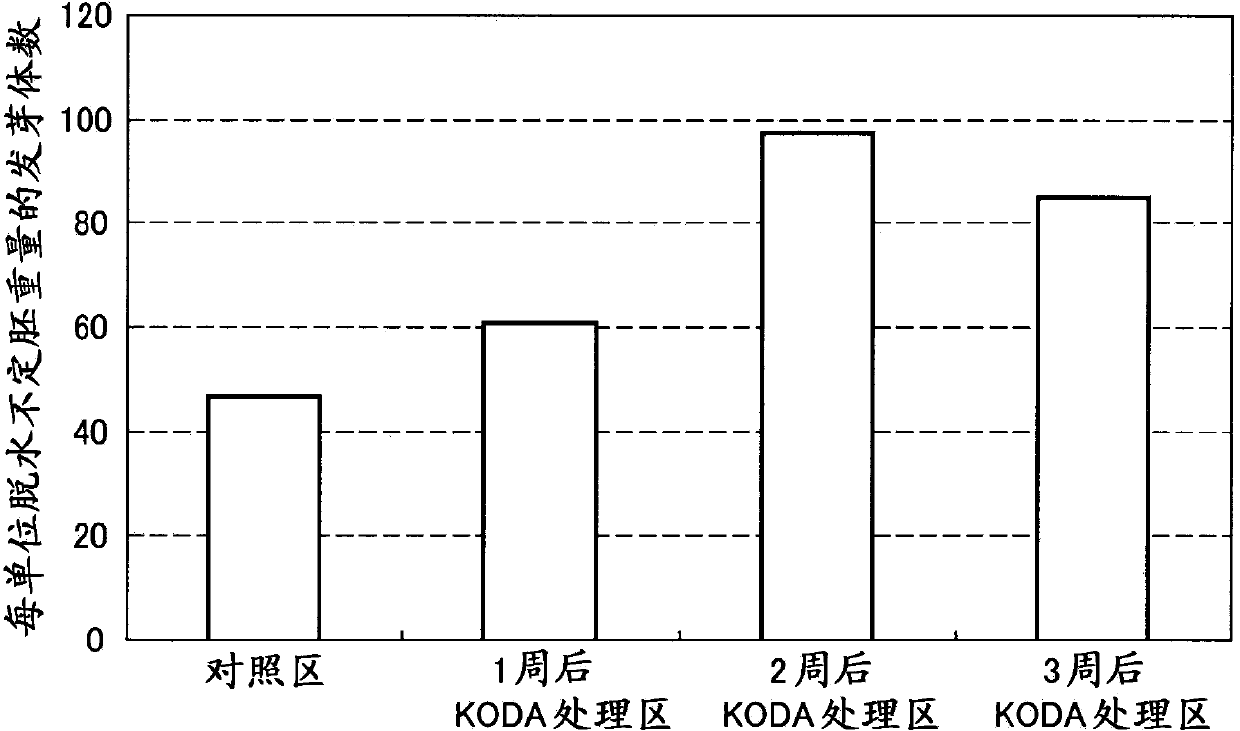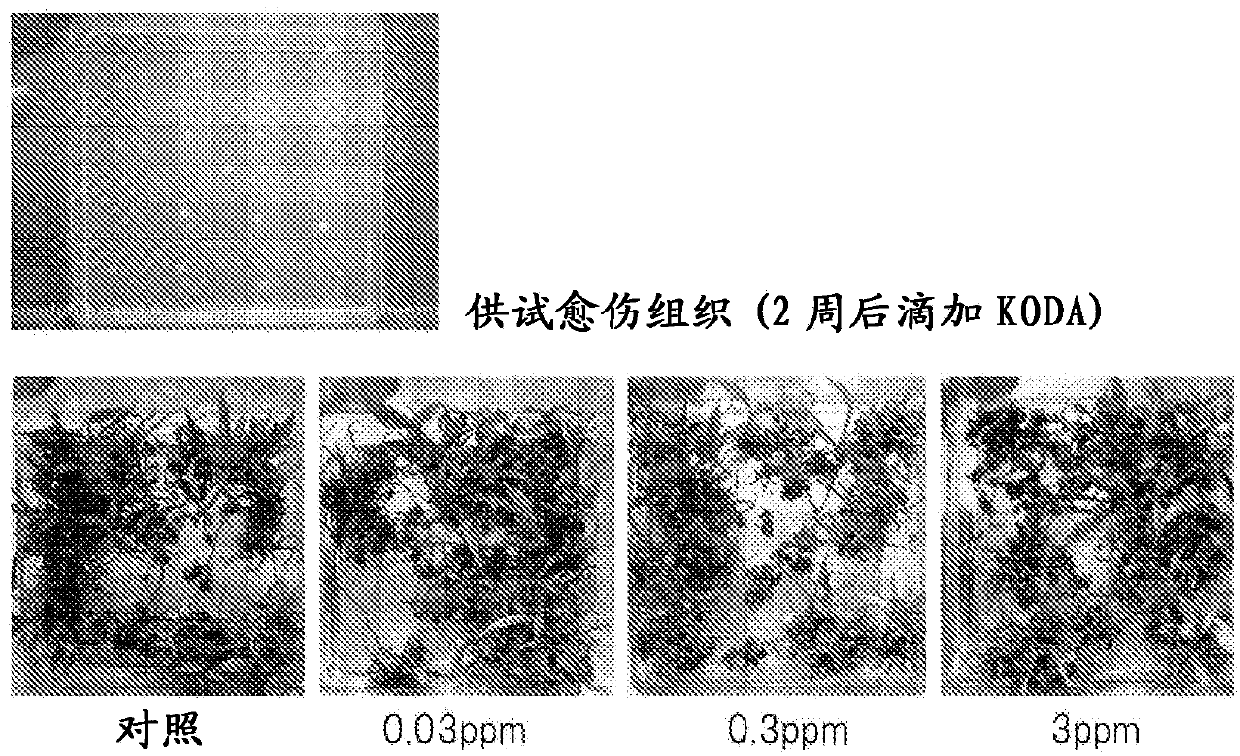Plant cell differentiation promoter
A differentiation accelerator and plant cell technology, applied in plant cells, plant growth regulators, plant growth regulators, etc., can solve the problem that the effect is difficult to say is sufficient, and achieve the effect of stable efficiency
- Summary
- Abstract
- Description
- Claims
- Application Information
AI Technical Summary
Problems solved by technology
Method used
Image
Examples
Embodiment 1
[0062] Example 1: Induction of callus tissue from cultured seedlings of the genus Bractia
[0063] As cultured seedlings of the genus Brachyphyllum (species Double Take), MS medium (medium of Murashige and Skoog) added to a planting box (inner volume 300 ml) manufactured by Asahi Technoglass Co., Ltd. with 3% sucrose, Agar (Wako Pure Chemical Industries, Tokyo, Japan) 0.8% and the solid medium adjusted to pH 5.8, in the bright place (photosynthetic photon beam density 5.7μmole / m 2 / sec, 16 hours of day length), the cultured seedlings were subcultured and maintained under the conditions of 25°C.
[0064] Sucrose (3%), 2,4-dichlorophenoxyacetic acid (4ppm), benzyl adenine (BA) (0.2ppm), acid hydrolyzate of casein were added to MS medium solidified with 0.8% agar (100ppm), 5mM 2-morpholineethanesulfonic acid monohydrate (MES) to prepare a medium for callus induction and proliferation (hereinafter referred to as "subculture medium") (pH 5.8). From the cultured seedlings cultur...
Embodiment 2
[0066] Example 2: Effect of KODA on Adventitious Embryo Differentiation Induction from Callus of the genus Brachyphyllum ring
[0067] The embryogenic callus maintained in the subculture medium was subcultured in a new subculture medium, and after 1 week (7 days), 2 weeks (14 days), and 3 weeks (20 days) after the callus 3ppm aqueous solution of KODA was added dropwise to the wounded tissue. After 3 weeks from the start of subculture, the cultured callus was placed in a liquid redifferentiation medium, and differentiated adventitious embryos were recovered after 6 weeks ( figure 1 ), carry out dehydration, measure the adventitious embryo weight after dehydration. The adventitious embryos were placed on the germination medium, and the number of germination bodies obtained was counted. The results are shown in Table 1. Calculate the germination body number corresponding to the adventitious embryo weight after every 1g dehydration ( figure 2 ). Compared with the control...
Embodiment 3
[0070] Example 3: KODA Concentration in Induction of Adventitious Embryo Differentiation from Callus of Colocasia genus Impact
[0071] The embryogenic callus maintained in the subculture medium was placed in a new redifferentiation medium, and after 2 weeks, 0.03ppm, 0.3ppm, and 3ppm of KODA aqueous solution were added dropwise, and the number of normally regenerated plants was recorded after 8 weeks. . Although plant bodies were regenerated in all test plots, a large number of plant bodies with severe stress symptoms (thin leaves) were found ( image 3). Those plants showing severe stress symptoms were not counted in the number of normally regenerated plants. In the control area, the number of plants showing stress symptoms was large, and as a result, the number of normally regenerated plants was small. The results are shown in Figure 4 .
PUM
 Login to View More
Login to View More Abstract
Description
Claims
Application Information
 Login to View More
Login to View More - R&D
- Intellectual Property
- Life Sciences
- Materials
- Tech Scout
- Unparalleled Data Quality
- Higher Quality Content
- 60% Fewer Hallucinations
Browse by: Latest US Patents, China's latest patents, Technical Efficacy Thesaurus, Application Domain, Technology Topic, Popular Technical Reports.
© 2025 PatSnap. All rights reserved.Legal|Privacy policy|Modern Slavery Act Transparency Statement|Sitemap|About US| Contact US: help@patsnap.com



